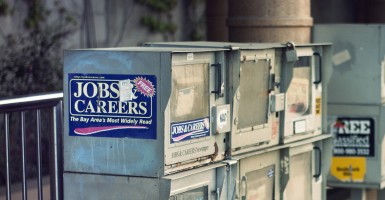As far as the Bureau of Labor Statistics is concerned, the economy started 2015 with a bang.
The agency’s January employment figures found strong growth throughout the labor market. Employers created more than a quarter-million jobs, labor force participation surged and wages rose. The report is long-overdue good news for workers who have suffered through the slowest and weakest recovery on record.
The BLS payroll survey of employers found businesses created 257,000 net new jobs in January, with strong growth in many industries. Employment expanded in retail trade (+46,000), construction (+39,000), health care (+38,000), restaurant (+35,000), professional and technical services (+33,000), financial activities (+26,000) and manufacturing (+22,000). Government employment also fell (-10,000), mostly driven by cutbacks at the Post Office and in state government.
More good news came in the revisions to earlier figures. The BLS updated 2014 job growth figures using data from unemployment insurance taxes. These revisions showed stronger job growth in 2014 than previously estimated – and much stronger job growth in the fourth quarter. The BLS now estimates that employers added 423,000 jobs in November (up from 353,000) and 329,000 jobs in December (up from 252,000). Ignoring census-related hiring, the November figures represent the highest reported net job creation since 2000.
The payroll survey also found hourly earnings rising 12 cents an hour over the month. This is welcome news if true, but the hourly wage series shows considerable volatility. Wages also jumped in November only to fall by an almost equal amount in December. Economists will have to wait for more data before concluding wages are rising. On an annual basis hourly earnings have risen just 2.2 percent over the last year.
The BLS household survey had more good news, albeit not apparent at first glance. The headline figures showed the unemployment rate rising 0.1 percentage points to 5.7 percent. But the figures also show the employment-to-population ratio rising 0.1 points. So more Americans are unemployed, and more have jobs.
This apparent contradiction comes from the fact the BLS counts only those actively looking for work as unemployed. In January, a net of 703,000 more Americans started looking for work. Many—but not all—of them found jobs. This surge in job seekers drove the increase in measured unemployment.
The strong January employment report is encouraging news for American workers. It remains to be seen whether this growth will continue or whether it simply reflects the benefits of falling energy prices.
For many workers this recovery is long overdue. Americans have suffered through the slowest recovery since the Great Depression. It took almost five years from the end of the recession for employment to return to pre-recession levels.
Despite the healthy January job growth, full-time employment still has not fully recovered. Moreover, 5 1/2 years into the recovery, workers still are probably closer to the start of the next recession than the end of the last one. Most post-war expansions have lasted four to seven years. None have lasted more than 10. The January employment report contains good news, but it may not last.
























